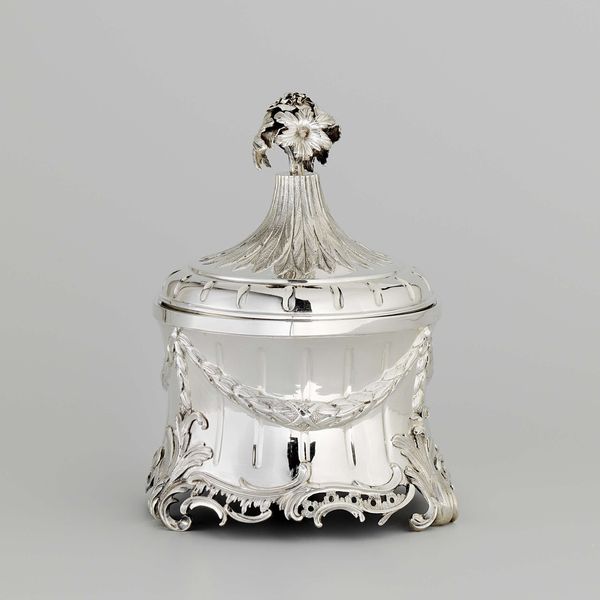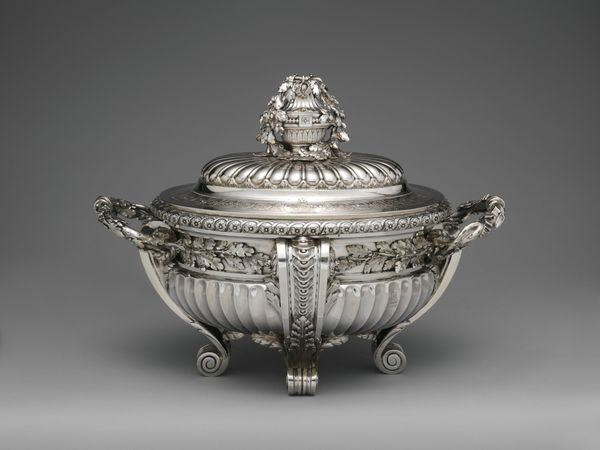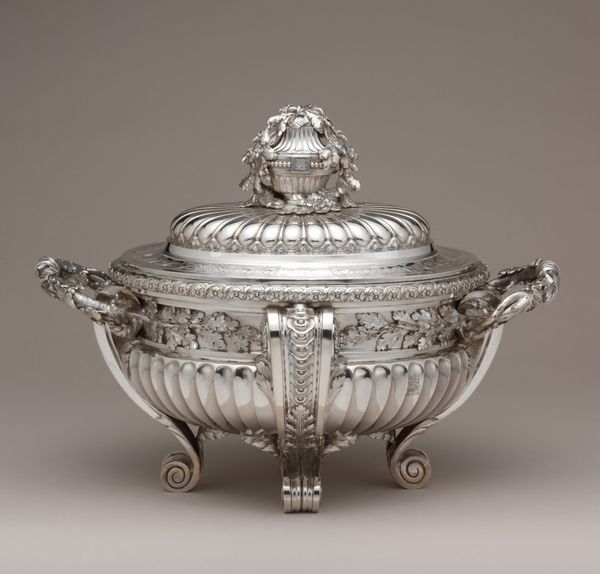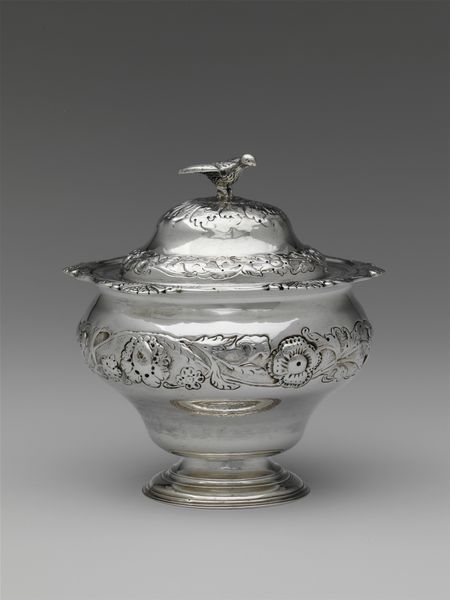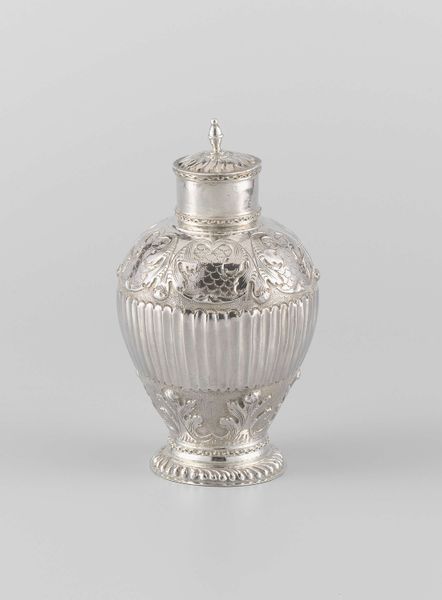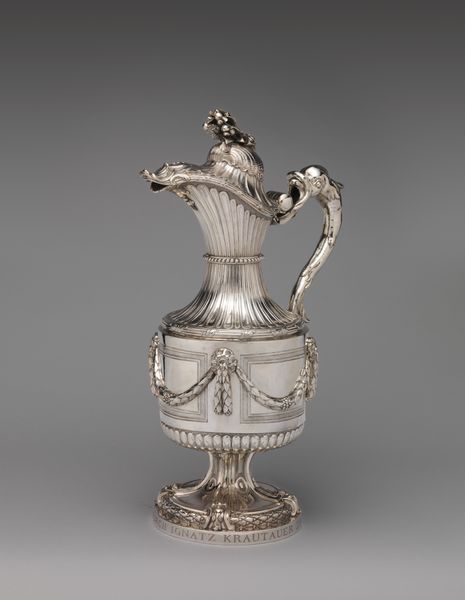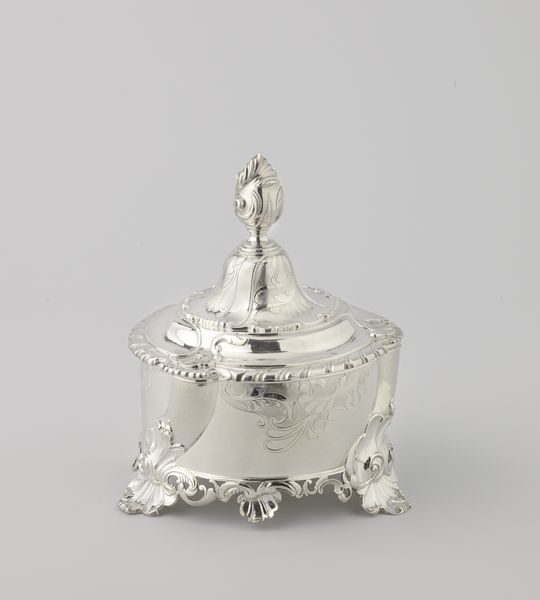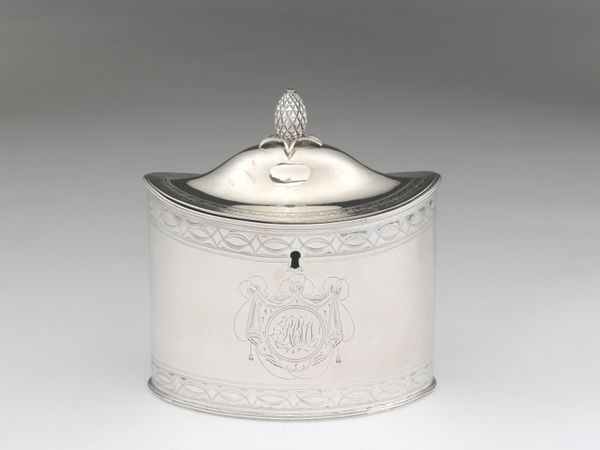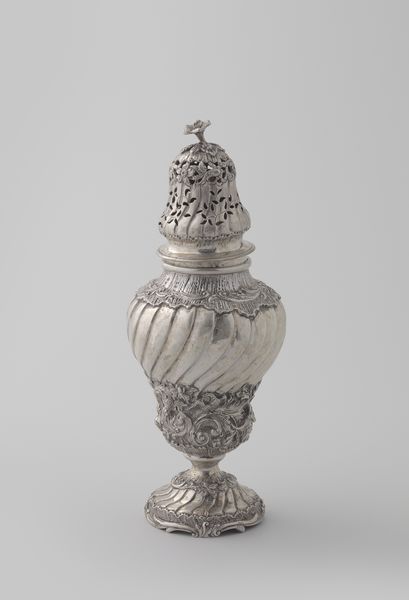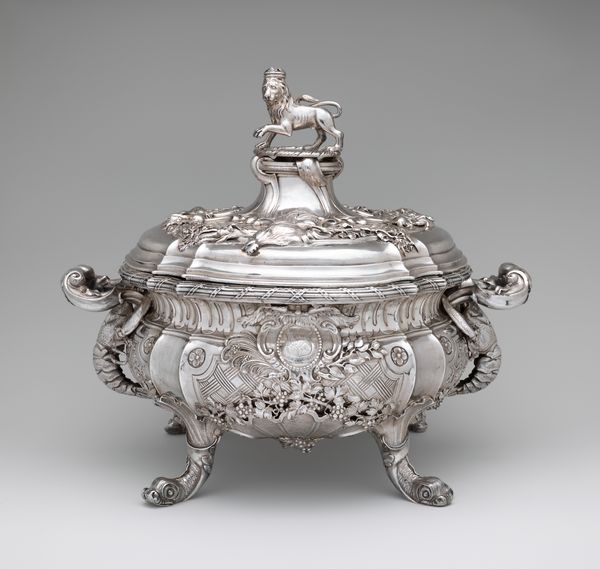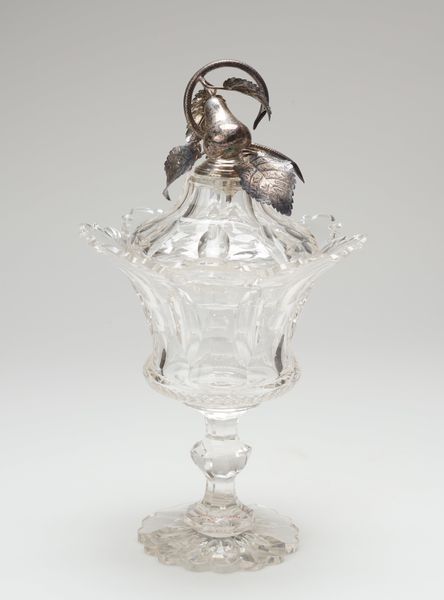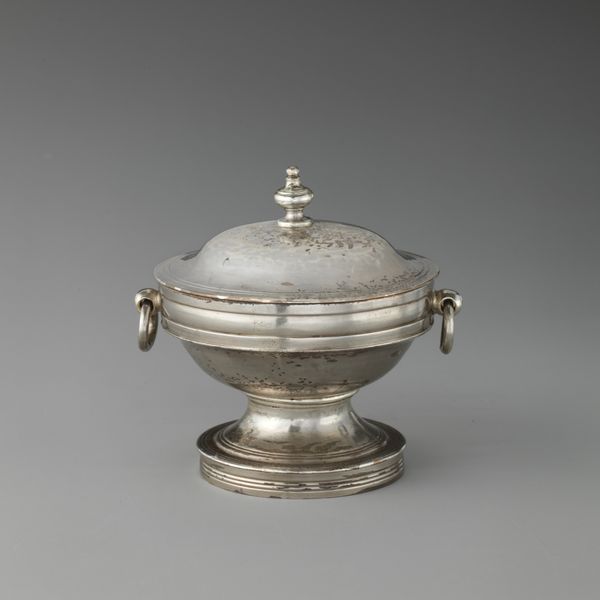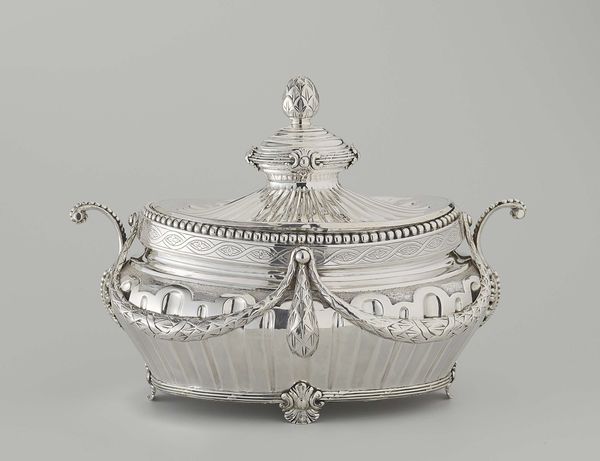
Dimensions: Overall: 7 13/16 x 6 5/8 in. (19.8 x 16.8 cm, Weight 1790g )
Copyright: Public Domain
Curator: Let's discuss this fascinating silver box with a cover crafted by Ignatz Krautauer in 1777, now residing at the Metropolitan Museum of Art. The decorative piece showcases the height of Rococo design. Editor: My first impression is that it seems delicate and almost whimsical. The reflective silver and the floral detailing give it an ethereal quality, belying, perhaps, the political and social realities of the time. Curator: Indeed. The piece itself adheres perfectly to Rococo principles, the fluted lines on the lid leading the eye upwards to a floral finial, while the body is ornamented with meticulously crafted garlands and cartouches. The emphasis is on asymmetry and ornamental excess. Editor: It's hard to look at something so seemingly innocuous without thinking about what it represents within its socio-historical context. While Europe was being swept up in revolution and reform, objects like this were commissioned for the elite. Can we really ignore that dissonance? Curator: Of course, such contrast cannot be ignored, yet formal analysis allows us to consider its unique composition. For instance, consider the proportional harmony between the box's cylindrical body, its subtly flaring base, and the gently domed lid. Editor: Fair enough. The meticulous detail undeniably speaks of immense craftsmanship. I am also drawn to how something ostensibly meant to be contained is literally crowned with representations of wild, blooming flora. Curator: This tension embodies Rococo. There is something to be said about how Krautauer, through manipulation of materials, delivers beauty that exists both as decorative charm, as well as function. The surface treatment and form all suggest careful engineering. Editor: True. It acts as an encapsulation of a fleeting moment, but it simultaneously acts as a silent participant. It's quite a privilege, really. Curator: I think it is important to focus, also, on what the artwork *is*, regardless of what the socio-historic interpretation would lead us to believe about its intended message. Thank you for joining me for that illuminating exchange. Editor: It seems there is never truly just one valid answer when engaging with art; my gratitude to you as well.
Comments
No comments
Be the first to comment and join the conversation on the ultimate creative platform.
